Contents
- What is an ARM Development Board?
- Types of Arm Development Boards
- IoT Test Chip Boards –
- Juno Development Platform –
- Neoverse Reference Designs –
- Mbed Development Boards –
- Keil Evaluation Boards –
- DesignStart DAPLink Boards –
- CMSIS Board Support Packs –
- What is the ARM development board application?
- The Key benefits of ARM boards include:
- Arm Structure
- ARM Development Board Price/Cheap Arm Development Boards
- Which ARM Development Board Should You Buy?
- Other boards to consider based on application:
- What is the best ARM development board to start learning ARM Microcontroller?
- Conclusion
Special Offer: Get $100 off your order!
Please email [email protected] for details.
What is an ARM Development Board?
ARM Development boards have become the ideal platform to accelerate SoC designs’ development while simultaneously reducing the risk. With the combination of FPGA technology and the ASIC technology used in ARM, boards help deliver an optimal solution for accuracy, speed, cost, and flexibility.
Most boards follow a similar design. These boards have limitations for onboard memory, low power running, and the general-purpose input and output pins of their features set and being programmable through the use of a USB cable.
Since there are so many boards to choose from, you need to know the differences. These boards can be hard to pick out, especially if you are a beginner without much experience working with ARM development boards. Especially if you don't work coding, or even have experience tinkering with electronics in general.
Types of Arm Development Boards
There are a few different types of ARM development boards that you can use. Their functionality determines each type and what you can do with them.
IoT Test Chip Boards –
The Arm creates a few boards that enable the easier development of Arm IP of real-life conditions and evaluates them. Popular uses of this board include simplified integration of ARM TrustZone technology for security. Having an improved understanding of the trade-offs as well as the performance of IP inside SoC designs. Use these boards to make progress on software before making it available.
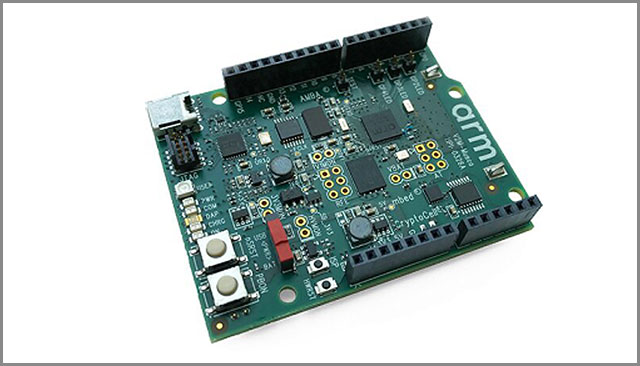
Juno Development Platform –
Is the Armv8-A platform for development. It is a development of software that includes Juno Arm Versatile Express Board and the Armv8-A reference software port only available through Linaro. You can use these boards for system control processors and firmware. Use these boards also for system initialization, clocked controls, voltage, and even power gating. Deliver AP software through Linaro and use ARM Trusted Firmware. The support of this board includes Linux, Busybox, and Android.
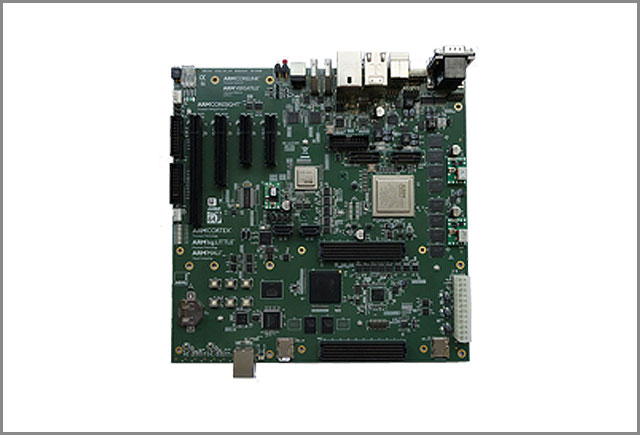
Neoverse Reference Designs –
References the useful designs as resources with best practices and integrating into a Neoverse subsystem inside a more massive SoC. Use these boards in servers, networking-storage, security offloads, edge computing nodes, 5G stations, and even access points.
Mbed Development Boards –
These are boards designed for fast, low-risk, flexible, and professional prototyping that is rapid. Mbed supports most MCU families of boards. These boards include STM32, Kinetis, PSoC, NRF52, and LPC. Helping you, these boards develop the Internet of Things quickly, efficiently, and securely with all the products in junction with IoT.
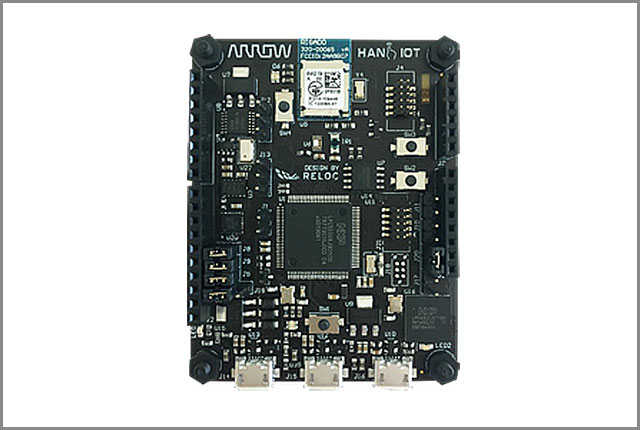
Keil Evaluation Boards –
The manufacturing and design of these boards and the starter kits help you evaluate an MCU architecture and start with Keil tools. Kiel boards have an extensive range of evaluation ARM boards. These boards support CAN, USB, Ethernet, SD Card, serial interfaces, LCD. They are available as starter kits.
DesignStart DAPLink Boards –
It is a board for Serial Wire Debug and UART access that is a design built on the board itself. Features of DAPLink include USB devices with Serial Wire Debug, drag, and drop programming with FPGA images, and they have a dedicated QSPI flash. There is a micro-SD but only for SPI application.
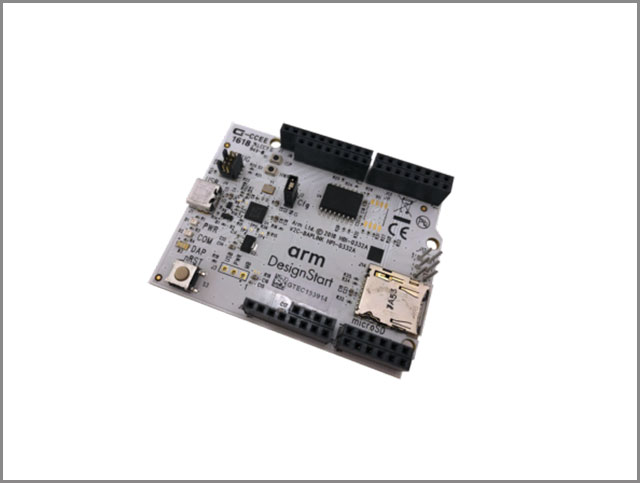
CMSIS Board Support Packs –
Defines a general standardized method of delivering software components, board support information, and device parameters and code. These boards provide the interfaces to processor and peripherals as well as real-time OS and components of middleware. This board will simplify software interfaces for re-use.
What is the ARM development board application?
The application of ARM development boards helps to provide systems on modules and make use of ARM processors. These boards offer development kids with hardware and software included helping with the design and prototypes of ARM-based applications.
These applications have the purpose of built-in for industrial uses or architecture. These boards feature sockets designs so that they can receive MitySOM-1808 modules or MityDSP-L138 modules. ARM boards are printed circuits containing the support logic required for the engineering of the application of microprocessors of interest.
ARM development boards' application is accelerating the entire production from SoC architecture until it reaches the software application development. These applications are from the tiniest Cortex-M series of microcontroller sensors up to entire supercomputers. Arm development tools and service designs will help engineers worldwide deliver leading products on the market to explore all ARM-based systems’ capabilities.
The Key benefits of ARM boards include:
- Benchmarking, evaluating, and starting software development through the use of new arm processors.
- It allows you to test logic blocks along with system IPs in FPGA that connect to an ARM that is running ASIC speed.
- Validates, prototypes, and develops software drivers for all new SoC IP blocks.
- Common mistakes that come with tool settings will be practically eliminated, and the minimization of configuration time.
- Accelerate the development of applications. During editing, there is the possibility of configuring debugging features. At the same time, you can modify the source codes.
- All safety-critical systems have the opportunity to be thoroughly tested and officially validated.
- It accurately simulated all sophisticated systems through the addition of peripheral drivers.
- Use these boards as access points where connectivity is limited.
- Servers can integrate seamlessly with other interfaces.
Special Offer: Get $100 off your order!
Please email [email protected] for details.
Arm Structure
The basic structure of all ARM development boards includes clock generators, clock trees, Timer, UART, and peripherals similar to ADC. A good start is with an STM32 as an LPC or TIVA are not significant to start with for anyone. Learn how you need to learn using the microcontroller to know what to do immediately when presented with a TIVA.
The standardization and commonality of systems the ARM architecture develop so that all SoC designs will have a reduced cost of ownership. The ARM views all security as an absolute built-in for all the designs and frameworks.
STM32 is a good driver or hardware abstraction layer that contains both API’s that convert tasks and structures like Timer that enables programming using the corresponding clock gating or even setting default reload values at the register.
ARM Development Board Price/Cheap Arm Development Boards
There is a degree of varying costs for ARM development boards. Most fall into a similar price bracket, with the odd premium design being significantly more costly. These boards are all integration boards in a pre-built system.
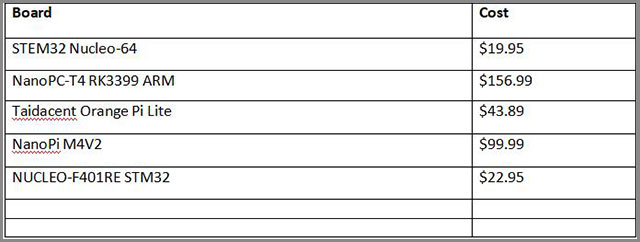
Which ARM Development Board Should You Buy?
Choosing which CPU to get will depend on what your intentions are with the board. A good start is with a Raspberry Pi to get a suitable device with equally good documentation. If there is the intention for more Embedded areas, the CPU that is transferable is the NXPiMX6. These boards are for embedded use, and Machine Automation is where they are most frequently found.
It isn’t hard to find a pre-built kit for all your ARM board needs and integrates seamlessly with the Operating System you have currently in use. The kit includes all the essential components and can connect via a USB adapter without needing additional built-ins.
Other boards to consider based on application:
- NVIDIA Jetson TX2 Developer Kit – Comprising a mini ITX board carrier taking Jetson TX2 system-on-module and a Tegra X2 Hexa core processor powers it.
- Hickey 960 for AOSP Development Platform – It is a board that complies with 96boards CE specifications. The board is most interesting to Android developers.
- SolidRun MACCHIATOBin, which is a networking workhorse – comes with a Marvell ARMADA that is powerful and quad-core.
- Dragonboard 820C Linux – The Qualcomm board supports Linux devices as well as Android.
- Gigabyte Synquacer – performs well under workloads that require all 24 cores.
What is the best ARM development board to start learning ARM Microcontroller?
ARM Microcontroller or the processor helps overcome challenges with processing. The processors are used for simplified, less power type methods of processing. These processors are the Arm’s controllers and are efficient by accepting instructions through a single memory cycle.
The best ARM boards for learning the ARM microcontroller are the NXP LPC2148 with KEIL software, Flash Magic, and Proteus.
Conclusion
ARM development boards are platforms used in conjunction with SoC designs to accelerate the development and reduce the risk that comes with SoC.
The ARM is the optimal solution that will help you learn to meet speed, flexibility, cost, and accuracy for ASIC and FPGA. Make sure when starting, you go with something like the STM32 instead of TIVA because the tools are transferable and more comfortable to work with for anyone.
Ultimately, the ARM Development boards are an essential way to integrate interfaces and provide embedded software with additional security. Using these boards is increasingly prevalent in organizations in the manufacturing sector as embedded software is often a prime component. The additional security measures through ARM development boards is a peace of mind offering for many large organizations with limited IT and programming knowledge.

Special Offer: Get $100 off your order!
Please email [email protected] for details.







